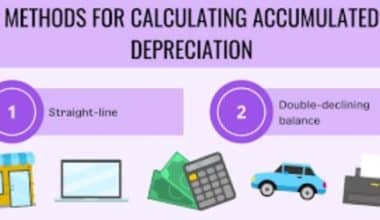For every business that will stand the test of time, a close watch must be kept on certain parts of that business. One aspect of the business that we must keep a close watch on is your revenue, which is also known as net sales. This is because it reveals the exact strength of the business in withstanding the test of time. This guide covers the importance of net sales vs gross sales, its formula, how it is calculated, what it is, and everything you need to know.
What Are Net Sales?
When we talk about net sales, we are focusing on a company’s total revenue minus allowances, discounts, and sales returns. It may also be referred to as a company’s revenue. When it comes to how it is calculated, it may not be obvious to everyone. In most cases, you will find them in the income statement report. However, analysts use it to make decisions or arrive at a conclusion about a business. It is also a great way to track a company’s growth and progress. An income statement may include the gross and net sales at different intervals, in line with how they ought to appear. Gross and revenue reveal the activity around a product’s performance. It measures the rate of discounts given to customers, product demand, the number of products returned by customers, and so on.
Are Net Sales Something to Watch Out for in Business?
Well, technically yes, and this is necessary for companies that deal with products. Why is this so? When a company does not pay attention to or monitor its revenue, over time, it will affect the gross profit and gross profit margin. If a company notices the demand for a product is low, it can use discount offers to boost sales. Failure to keep a watch on progress means, they may end up with high sales demand and low gross profit. Well, let’s take a look at how some of the factors affect revenue.
Factors That Affect a Business’s Net Sales
Three cost factors influence net sales either positively or negatively. These are discounts, sales returns, and allowances. To ensure a company’s performance analysis is accurate and good enough to use its results to make decisions, each of these cost factors will be accounted for across a company’s financial report.
#1. Allowance
During production, a company may record damage to some of its products. If these products are still sellable, they will mostly reduce the price and still put them up for sale. When this happens, the sales of such products are recorded as an allowance. This is because it is the difference between the original marked price of the goods and the actual selling price of the goods.
#2. Sales Returns
Most businesses that deal in products will at some point get their goods returned. Retailers are not left out of this. In most cases, the firm returns the customer’s money fully or in part. When this happens, the gross sales are usually reduced by the amount of the returns returned, and this equally affects the net sales.
#3. Discounts
Discount offers are something every business does at one point or another. For instance, most Christmas seasons come with a lot of discount offers in the state. There are also times when companies offer discounts to customers who make large purchases or pay before the deadline. If Bretmort buys about 5 thousand cartons of noodles, he may receive a discount if he clears the payment within a specified number of days.
Net Sales vs. Gross Sales
Before we fully dive into gross sales vs net sales, let’s get on to what a gross sale is. Gross sales are a company’s total sales transactions over a specified period while net sales are the balance you get when you deduct allowances, discounts, and the number of goods returned from gross sales.
Net Sales VS Gross Sales: Key Difference
When comparing net sales vs gross sales, the key difference lies in their definitions and how they are calculated or arrived at in the income statements.
In terms of its definition, gross sales refer to a company’s overall sales record over a period. While net sales refer to the exact figures a company generates from the sale within a period after all deductions have been done.
In terms of formula, the formula for gross sales is unit sales x price, while that of net sales is gross sales – allowance, discount, and sales return.
Additionally, all price reduction allowances, discounts, and any refunds given to customers after the sale are reflected in net sales. On the other hand, gross sales are the total of every sale that a company records during a trading period.
Both records are important and play vital roles in analyzing a company’s trading performance. However the net sales figures are more esteemed than the gross sales even though, you can’t get the formal without the latter. This is basically because gross sales figures give an overall report base on sales activities while the net sales reveal a company’s actual revenues. It also factors other variables that wouldn’t pass for sales.
Net Sales VS Gross Sales: Tabular Difference
The table below highlights the exact elements that differentiate revenue from gross sales.
| GROSS SALES | NET SALES |
| This is the overall record of a company’s sales record. | This is the exact record of a company’s sales. |
| Can’t be relied on in making major decisions about a company. | The figure is used to analyze a company’s health development and trading performance which in turn are using in to make decisions about the business growth. |
| The formula for gross sales is the sales price multiplied by units. | The formula for net sales is gross sales – allowance, discounts, and sales return. |
| Gross sales are independent of net sales. | Net sales depend on the gross sales and other reductions. That is you can’t arrive at one without the other. |
Net Sales Formula
The formula for net sales is as follows;
Net Sales = Gross sales – Sales Return – Discount – Allowance
This simple formula is how the net sales are calculated.
How Are Net Sales Calculated?
Are you wondering how net sales are calculated? To arrive at your exact revenue figure, you will have to first get your gross sales and then subtract the three items that affect sales. These are your discounts, sales returns, and sales allowances. Once you take these away from gross sales, you will arrive at your company’s actual revenue.
Net Sales Example
Let’s say XYZ sold 1,500,000 earbuds in a year at $20 per unit. In the same year, about 150 earbuds were returned, with a discount of $10,000, and a $20,000 allowance. With the following information, calculate the revenue of XYZ for the year ended December 31st, 2021. Assume the company adopted a full refund option for returned goods. Let’s see how net sales are calculated using the above examples.
First, we will get our gross sales, remember to do this, you will multiply units by price.
| Item | Amount |
| Number of units sold (1,500,000 X $20) | $30,000,000 |
| Discounts | $10,000 |
| Allowance | $20,000 |
| Sales returns based on a full refund ($20 X 150) | $3,000 |
From the table above, the gross sales amount is $30,000,000. Moving on to the exact revenue.
Gross sales – Sales returns, allowance, and discounts
$30,000- ($10,000 + $20,000 + $3,000)
$30,000,000 – $33,000 = $29,967,000
Total Revenue $29,967,000.
Presenting the Net Sales and Gross Sales in the Income Statement
When presenting the income statement, the parties involved in this always record gross and revenue. Although, in presenting the final report to the board, some firms prefer not to include gross sales because it makes the record unnecessarily take up a lot of space.
Another reason why gross sales figures are bypassed is that when used alone, the figures are not the exact sales record of the company. This is the main reason why analysts look for revenue figures in any income statement because it reveals the overall health of a company’s product.
Why are Net Sales Important?
The following are some of the importance of revenue figures to businesses.
| KEY TERMS | NET SALES IMPORTANCE |
| Decision Making | One of the most important uses of an exact sales figure is its usefulness in making decisions. With an accurate repost, a company can decide to increase or reduce its discount. It can also decide to take up other measures that will improve the sales of the company. |
| Health Status | It is used to determine the performance of a business product. It also reveals if its sales record is healthy, and an unhealthy sales record will eventually affect a business if the necessary actions are not taken. |
| Exact Revenue | It reveals the exact amount a company record as revenue for the year. |
| Determine Investment | The exact sales your company can pull off within a period will determine whether or not an investor will invest with you. Most often, investors check out the sales records of a company and use the report as a yardstick to decide whether to invest or not. |
What is an example of net sales?
All additional deductions, including discounts, returns, and allowances, can be made by deducting the total number of sales. Your net sales, for instance, would be $96,000 if your gross sales were $100,000 and your sales discounts, allowances, and returns totaled $2,000, $1,000, and $1,000, respectively.
Does Net sales mean profit?
Your total sales revenue less returns, allowances, and discounts is known as net sales. Your gains come from net income. It equals your net sales after all costs are subtracted and any other revenue is added.
What is difference between net and gross?
Before taxes, benefits, and other payroll deductions are taken out of an employee’s paycheck, that amount is known as their gross pay. Net pay, often known as take-home pay, is the sum that is left over after all deductions have been taken into consideration.
What is difference between net sales and sales?
While net sales include all costs incurred during the sales process, gross sales do not account for deductions. Net sales are a better indicator of how much money a company is making from sales.
What is net and gross profit?
The direct costs of bringing the item to market are subtracted from the revenue from sales. Net profit is calculated as sales revenue less all business expenses.
What is a net amount?
Before taxes and other withholdings, an employee’s gross pay is what they are paid, whereas their net pay is what they really receive after all payroll deductions.
Is sales gross income?
Gross margin, or sales less cost of goods sold, is the same thing as gross income for a business. Thus, a company’s gross income is the amount it receives from the sale of goods or services before deducting selling, administrative, tax, and other costs.
What is net profit called?
Because it appears on your income statement as the final line after all expenses have been deducted, net profit is also known as the bottom line. Since net profit is the amount that the company keeps, it is one of the most significant figures that people pay attention to.
Conclusion
Small businesses must not just understand net sales but must also learn to use the formula to calculate it and also manage their business effectively. Why is this necessary? It is vital that it will either convince investors or turn them off. Also, it reveals how a business handles and increases its sales. Except your business exists for non-profit purposes, you need to keep an eye on it. Even if you seek angel financing in place of loans or grants.
FAQs on Net Sales
Is net sales same as net profit?
In dealing with net revenue, it refers to the exact money that came in through sales activities. It does not in any way include profit come. Your profits are your net income. You arrive at your profit after subtracting expenses from your net revenue.
Can a company's net revenue be negative?
Yeah, it is pretty much possible but then, it isn’t a good record. A corporation with a negative net revenue makes a loss rather than a profit during that accounting period. Also, a company can have a positive sales record, and still, be at loss. Why? It is because its expenses are higher than its revenue.






